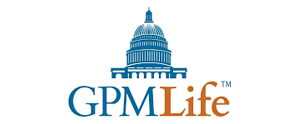Hearts and Wallets has introduced a survey titled, Portrait of U.S. Household Wealth: Market Sizing, Segmentation and Product Ownership by Age, Assets, Lifestage and Behavioral Segment.
The study builds upon the unprecedented recent re-interview of households who participated in the 2007 Federal Reserve Survey of Consumer Finance, and translates the findings into understandable terms, pulling in the Federal Reserve Flow of Funds and U.S. Census data.
The analysis shows total U.S. household investable assets at $30.2 trillion at year-end 2010, with retirement assets at $10.7 trillion and taxable assets at $19.5 trillion. Taxable assets climbed steadily since 2004, from $12.9 to $19.5 trillion. Retirement assets recovered from a bad stumble down to $8.1 trillion in the crash of 2008, rising to slightly surpass their 2007 peak of $10.5 trillion.
Winners and losers
Of the approximately 120 million households, about 30 million have at least $100,000 in investable assets, according to the survey. But 90 million households have not reached this milestone, an unfortunate increase from 82 million before the 2008 market turmoil.
“The 2008 downturn hit households very unevenly, and that may prove true again with continued market turbulence,” says Laura Varas, Hearts & Wallets principal. “In intuitive terms, about 1 in 8 of the households now ‘in’ the $100,000 to $250,000 segment moved down from a higher investable asset segment.”
According to the survey, many affluent asset segments shrank in numbers:
- The $2 to $5 million, and the $250,000 to $500,000, segments were particularly hard hit. The $250,000 to $500,000 asset segment now totals 6.4 million households, down about 25 percent from 8 million in 2009. This segment is concentrated in the 45 to 54 and 55 to 64 age groups, as in 2009. This group controls $2.5 trillion in assets, down from $2.9 trillion, with the decline occurring in retirement accounts and managed investments.
- The $1 to $2 million and $100,000 to $250,000 segments grew, as they received households that shifted down into these asset segments.
- Among the poorest Americans, the median household with very little to lose lost nothing. The median household in the 25th to 49th wealth percentiles lost $10,700. The 50th to 75th percentiles (corresponding to the $50,000 to $100,000 wealth segment), lost $40,000. For the 75th to 89th percentiles (from above $100,000 to just under $500,000), the median household lost $134,000. The worst one-quarter of households lost $261,000, but the best one-quarter actually improved relative to its peers.
The report shows that personal savings continue to hit highs. Top destinations for investor savings are treasury securities, mutual fund shares and bank deposits.
---------
By Ayo Mseka
Editor-In-Chief
Advisor Today






.png?width=300&height=300&name=CC%202025%20Ad%20(300%20x%20300%20px).png)
.png?width=300&height=600&name=Tax%20Talk%20Graphic%20-%20email%20tower%20(300%20x%20600%20px).png)



.png?width=300&name=NAIFA-FSP-LH%20with%20tagline%20-%20AT%20blog%20email%20ad%20(300%20x%20250%20px).png)
.png?width=728&height=89&name=2024%20Congressional%20Conference%20(728%20x%2089%20px).png)
